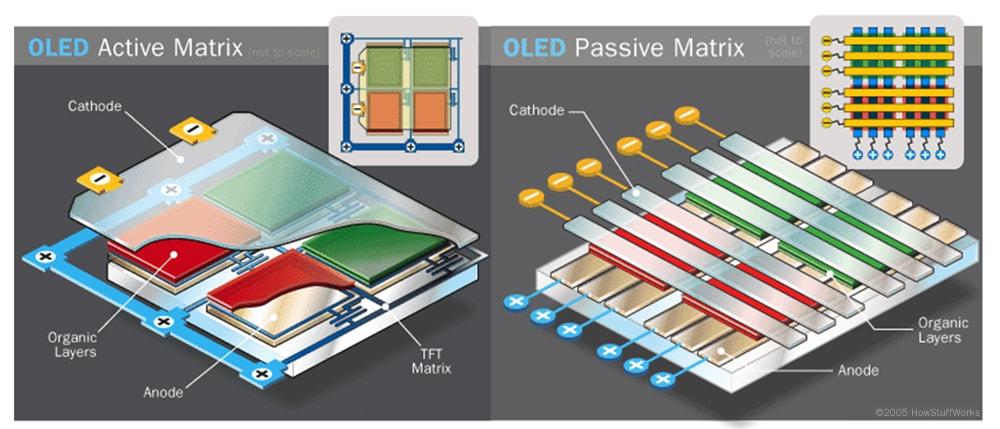AMOLED is a relatively new alternative to TFT LCD displays as far as the embedded market is concerned, and in the last two weeks we’ve looked both at the advantages that AMOLED offers and the reasons why you might still want to stick with TFT.
We’d like to round off the series by offering a little more insight into the technical differences between the two technologies, as well as introduce a third option – PMOLED.

What is the difference between AMOLED and TFT displays?
While most graphic colour displays employ thin-film transistor (TFT) technology to control the colour and light intensity of every pixel displayed, only AMOLEDs are truly emissive displays; they generate their own light instead of modulating and filtering the light provided by a single, common source – the backlight.
AMOLEDs use TFT technology to implement their active pixel addressing scheme, which sets them apart from their passive matrix cousins (PMOLED). Both types generate light through the all-important emissive electroluminescent layer, formed from a thin layer of organic compound, but PMOLEDs use a simpler ‘row/column’ pixel addressing scheme inherited from earlier LCD designs, which imposes the need for refresh rates high enough to maintain acceptable image persistence.

AMOLEDs, on the other hand, allow each pixel to maintain its state between refresh cycles, through the integration of an active (transistor and capacitor) circuit on each pixel. This removes the need for high refresh rates purely for image persistence, which normally translates to comparably lower operating power consumption. However, as with most display technologies that have evolved over the years, one type doesn’t necessarily supplant the other; while AMOLEDs have many advantages over PMOLEDs, there are still many applications where a PMOLED display would be the more suitable option. Similarly, the use of other forms of display technology using backlit LCD technology may represent the right solution in specific applications. This blurred line only increases the design complexity.
AMOLED applications
Today, the single biggest application area for AMOLEDs is high-end smart phones, but with new manufacturing facilities and advanced processes coming online, costs and MOQs are coming down. It is becoming easier for the industrial sector to access AMOLED technology. OEMs can now choose an AMOLED display in standard sizes or have bespoke solutions designed for them, bringing the benefits and advantages of OLED technology to a wider range of products.


